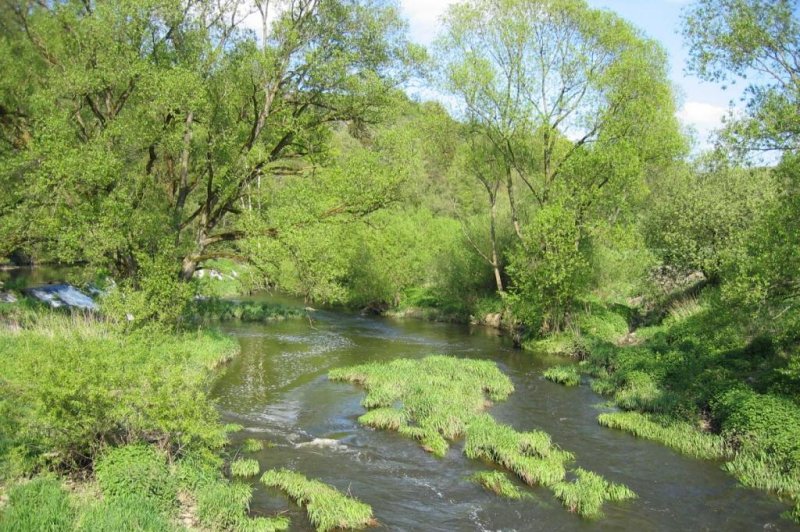When rivers are allowed to meander, they can better handle siltation and develop new pockets of sediment-free habitat for aquatic species. Photo by J. Geist/TUM
Sept. 27 (UPI) -- New research out of Germany suggests efforts to curb erosion aren't sufficient to prevent severe siltation in rivers.
In a paper published this week in the journal Land Degradation and Development, scientists at the Technical University of Munich argue siltation will remain a problem as long as rivers are straightjacketed and denied the freedom to twist and bend.
"The prevention of erosion alone, as water and fisheries management have long demanded, does not then help river beds," Karl Auerswald, an ecologist at TUM, said in a news release.
Auerswald and his colleagues have spent the past several years sampling the sediments accumulating at the bottom of Moosach, a tributary of the river Isar near Munich. Their analysis suggests erosion mitigation efforts have done little to prevent the problems caused by siltation.
Siltation is the flow of silt and sediment into the river. The particles become suspended in the river and accumulate on the riverbed. Siltation causes problems for fish, mussels and other aquatic organisms.
Oxygen-filled cavities between gravel on the riverbed are essential for many microorganisms. Fish also used the cavities to lay their eggs. But these gaps are often filled up by sediment.
The latest research suggests this problem will persist -- even as erosion is reduced -- as long as rivers are confined and straightened. According to Auerswald, Moosach is no longer a river as much as it is a canal-like channel. The diagnosis holds true for rivers throughout Germany and the world, researchers say.
Given room to roam, rivers can handle moderate amounts of siltation.
"The entry of erosion material also occurs under natural conditions," Auerswald said. "Under natural conditions, however, the riverbed is constantly being relocated and the cavity system is cleared from the inundated floodplain by the groundwater flow."
Exacerbating the problems of river-straightjacketing and uncontrolled siltation are the lack of floodplains and buffering habitat. The human development and engineering that has squeezed rivers into straight lines, Auerswald warns, has also removed buffer of zones of vegetation that help prevent flood damage and erosion.
The solution to the problem, researchers argue, is fairly simple: leave rivers alone and give them space.
"Whatever floodplains are still around must absolutely be off-limits," Auerswald said. "We would do well to allow the rivers to meander on their own again."















